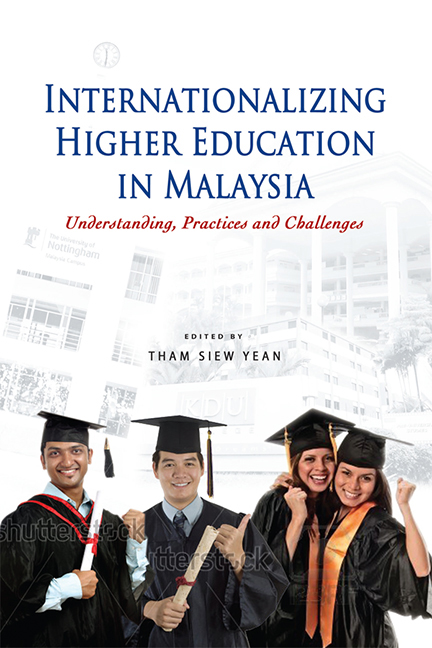Book contents
- Frontmatter
- Contents
- List of Tables
- List of Figures
- Preface
- Contributors
- 1 From the Movement of Itinerant Scholars to a Strategic Process
- 2 Towards Understanding the Internationalization of Higher Education and its Challenges
- 3 Public Universities: Development and Internationalization
- 4 Private Higher Education Institutions: Development and Internationalization
- 5 Macro Perspectives: Ideas, Practices and Challenges
- 6 Micro Perspectives: Ideas, Practices and Challenges
- 7 Concluding Remarks
- Index
1 - From the Movement of Itinerant Scholars to a Strategic Process
Published online by Cambridge University Press: 21 October 2015
- Frontmatter
- Contents
- List of Tables
- List of Figures
- Preface
- Contributors
- 1 From the Movement of Itinerant Scholars to a Strategic Process
- 2 Towards Understanding the Internationalization of Higher Education and its Challenges
- 3 Public Universities: Development and Internationalization
- 4 Private Higher Education Institutions: Development and Internationalization
- 5 Macro Perspectives: Ideas, Practices and Challenges
- 6 Micro Perspectives: Ideas, Practices and Challenges
- 7 Concluding Remarks
- Index
Summary
INTRODUCTION
The internationalization of higher education in Malaysia as manifested by the movement of students has changed tremendously in the last two decades as Malaysia has shifted from a sending to a receiving country. This has impacted the world market for international students as noted in the Observatory on Borderless Higher Education (OBHE) 2007 report on the patterns and trends of international student mobility (Verbik and Lasanowski 2007). In that report, the world market for higher education was divided into four categories of players. The major players consisted of the United States, United Kingdom and Australia, whereby each had a respective market share of 22 per cent, 12 per cent and 11 per cent. Germany and France with a respective market share of 10 per cent each were designated as middlepower players. In the third category, Japan, Canada and New Zealand were considered to be evolving destinations where each had a market share of 5 per cent, 5 per cent and 3 per cent respectively. Three East Asian economies, namely China, Malaysia and Singapore with a respective market share of 7 per cent, 2 per cent and 2 per cent were listed in the last category as emerging contenders.
Subsequent analysis in 2009 on the same issue revealed that Singapore and Malaysia have retained their respective market shares at 2 per cent each while South Korea has joined the group of emerging contenders with a market share of 1.5 per cent (Lasanowski 2009). Malaysia, as in the case of the other emerging contenders, has taken aggressive measures to recruit international students, including substantial government support to build “world class” institutions, in order to complement its relative cost advantage over traditional exporting countries such as the United States, United Kingdom and Australia.
As a phenomenon, internationalization of higher education is not new, especially when viewed in terms of movement of scholars. In the Middle Ages and Renaissance, scholars embarked on academic pilgrimages as there were not many universities, and therefore the pursuit of knowledge and learning required these itinerant scholars to leave home and travel to distant centres of learning (de Wit 2002, p. 5).
- Type
- Chapter
- Information
- Internationalizing Higher Education in MalaysiaUnderstanding, Practices and Challenges, pp. 1 - 17Publisher: ISEAS–Yusof Ishak InstitutePrint publication year: 2012



